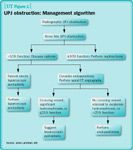Article
When and how to perform lap pyeloplasty for UPJ obstruction
The ideal management strategy for correction of ureteropelvic junction (UPJ) obstruction remains undefined. Open pyeloplasty for correction of UPJ obstruction was first described by Anderson and Hynes over a century ago and remains the gold standard against which we must compare all alternative therapies.


In 1993, Schuessler and colleagues introduced laparoscopic pyeloplasty in an effort to achieve the excellent efficacy of open dismembered pyeloplasty via a less invasive approach (J Urol 1993; 150:1795-9). Over the past decade, laparoscopic pyeloplasty has been shown to be a highly efficacious treatment for UPJ obstruction with outcomes similar to those reported for open pyeloplasty (J Urol 2002; 167:1253-6; Urol Clin North Am 2000; 27: 695-704; Urology 2001; 57:443-7; Eur Urol 2002; 42:268-75; J Urol 2003; 169(6):2037-40; Br J Urol Int 2001; 88:526-31).

A MAG3 furosemide (Lasix) washout renal scan is performed in all patients with symptomatic UPJ obstruction (pain, infection, calculi, etc.). The renal scan provides split renal function and the t½ of each kidney.
If the patient has normal contralateral renal function and ≤10% function on the affected kidney, a nephrectomy is recommended. However, in these kidneys with poor function, if prior radiographic imaging demonstrates evidence of reasonable renal parenchyma, a double-J stent is placed to relieve obstruction, and the renal scan is performed after 2 weeks of renal decompression. Occasionally, the decompressed kidney will improve in function and can be considered for UPJ obstruction repair.


